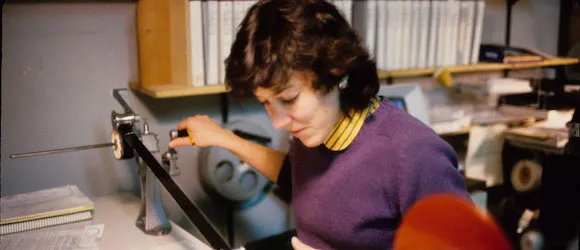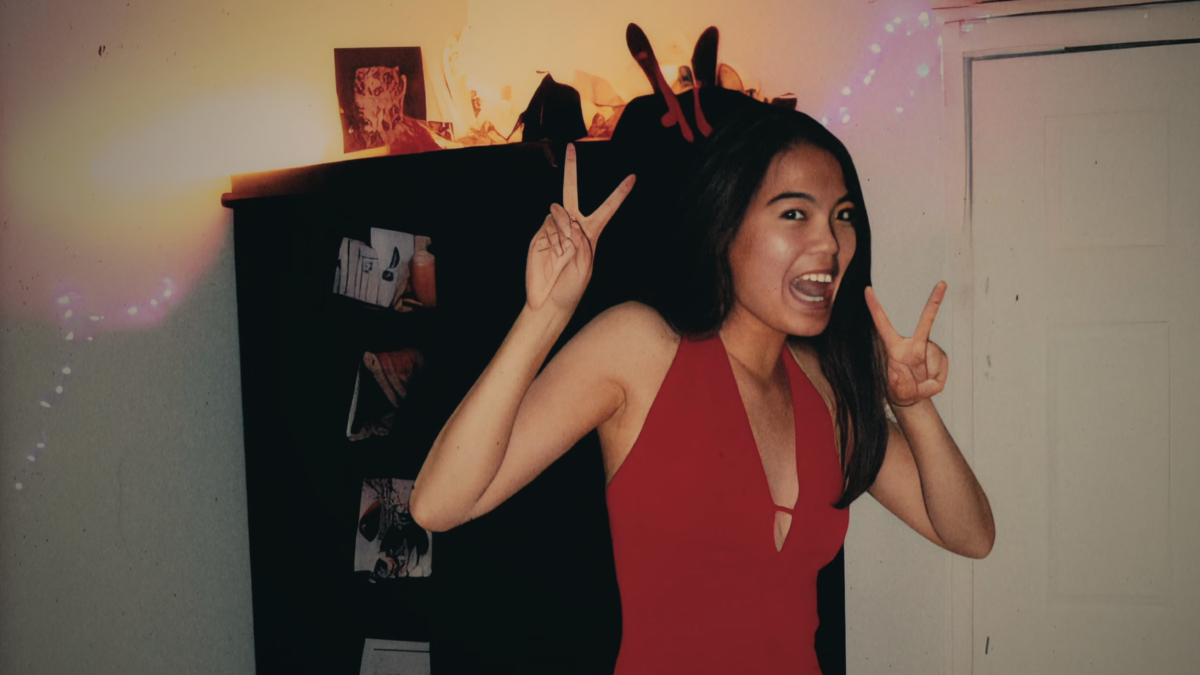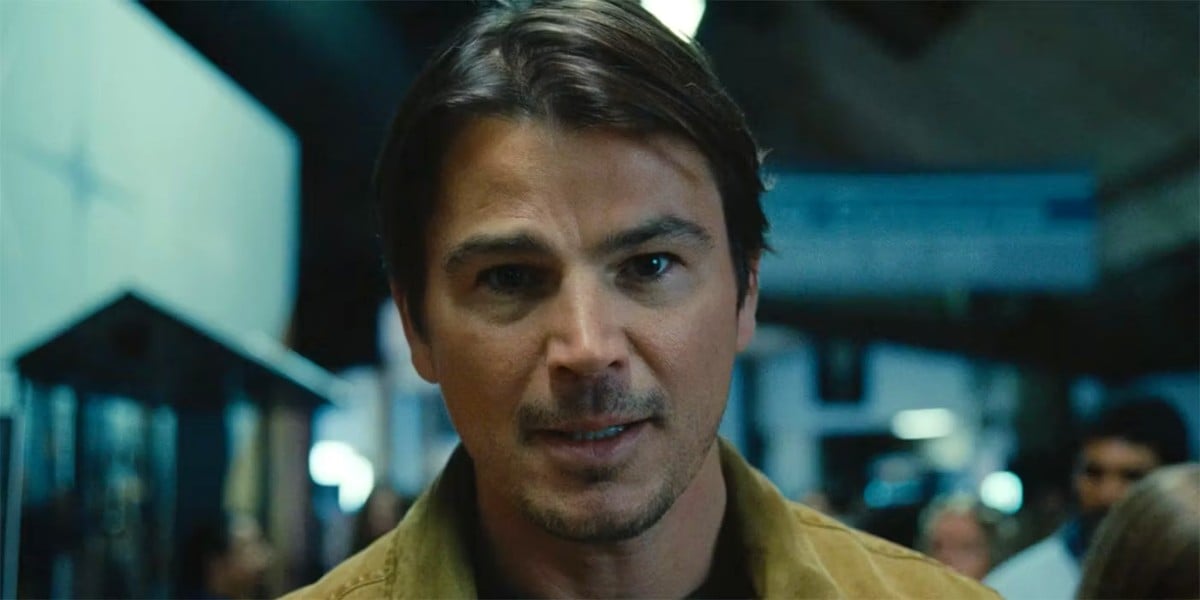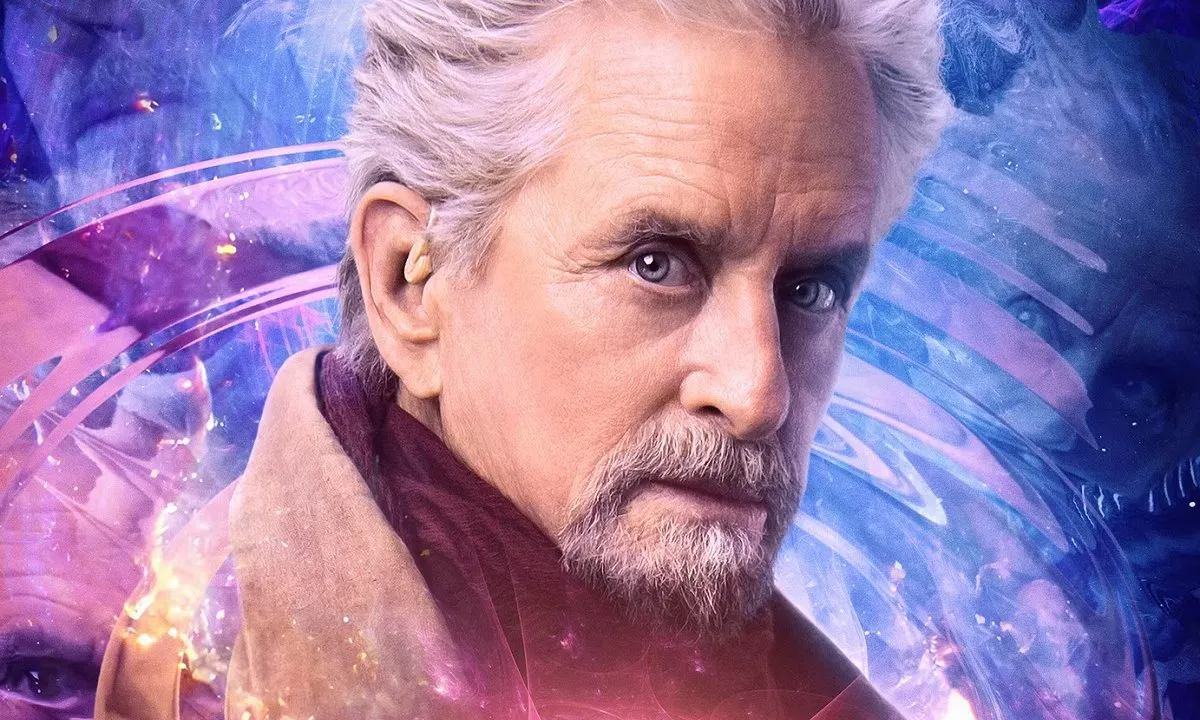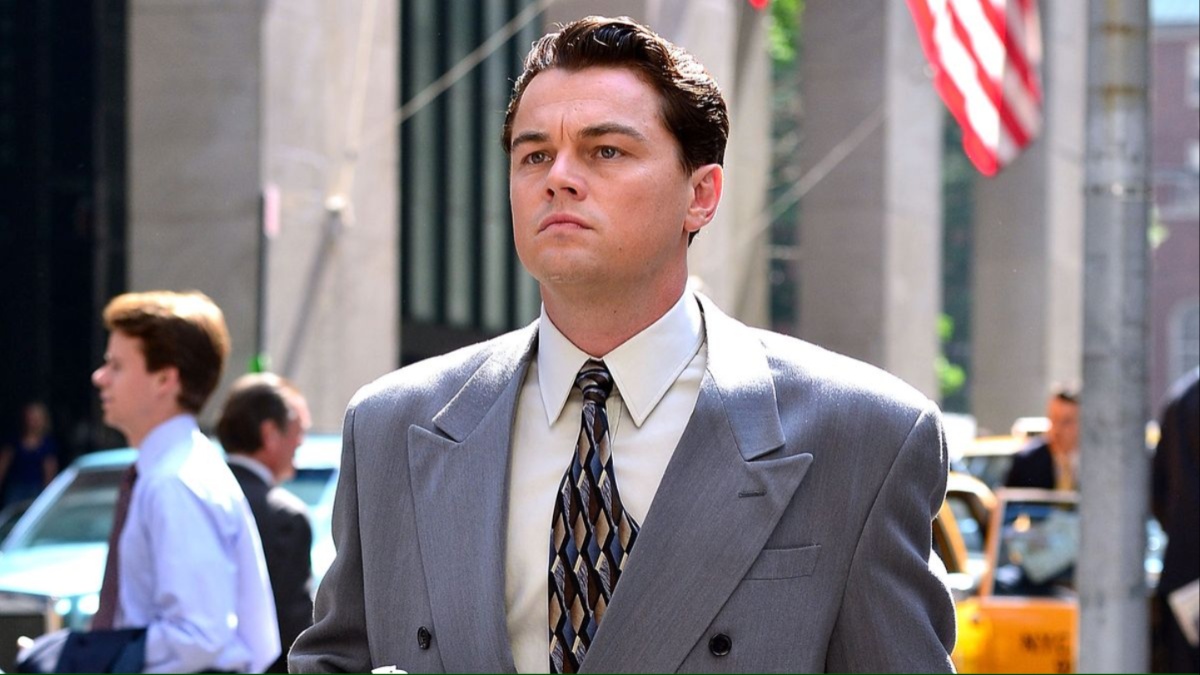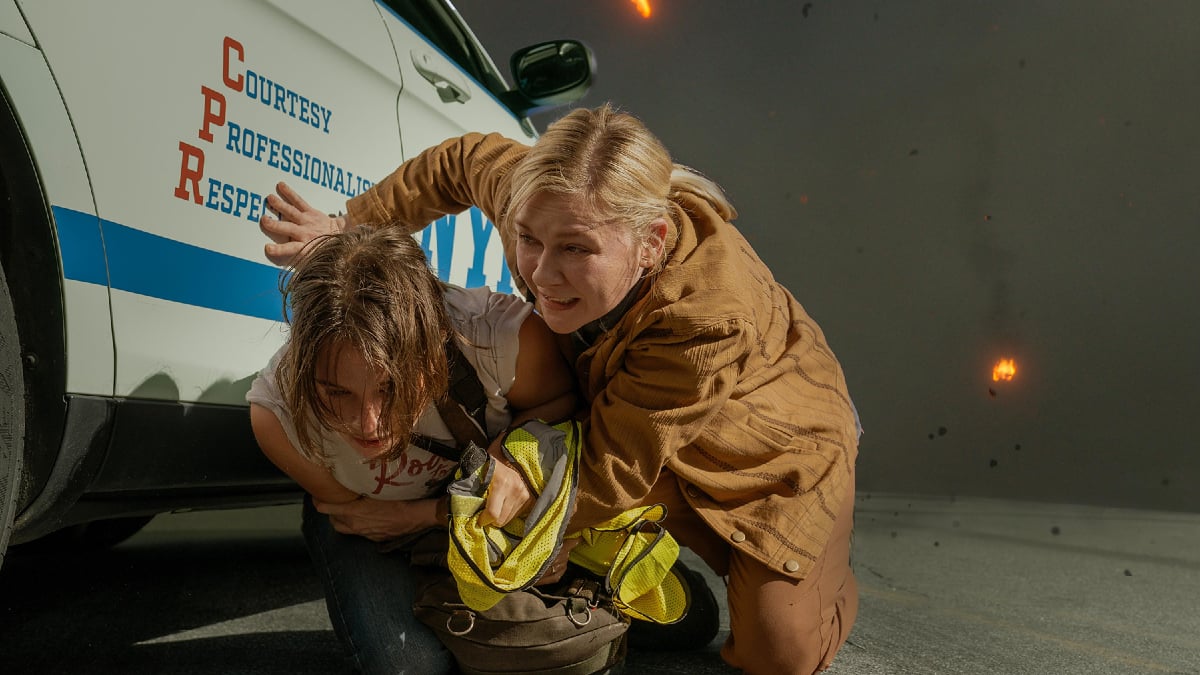In 1989, I was a young feminist who wanted to be a filmmaker. While there weren’t many women in this fairly “boys club” field, Academy Award winner Ed Jones hired me in Optical because he knew I could do the job. Approximately 25 people worked in the ILM optical department. The few women in this department – Peg Hunter, Lori Nelson, Mary Walter, and me – were effects pioneers in a male world.
I called up these ‘pioneer women’ and asked them about their experiences in the ILM Optical Department.
The women of the motion picture visual effects industry occupy a special place in cinema history. They created special effects for movies in a time before computers could do the job. Effects were created through optics – the science of light – and were technically referred to as Optical Effects.
Before computers, we used real film, light, and photography in motion picture effects. The tools and methods were throwbacks to the industrial age from which they were created. Hot splicers, synchronizers, pin blocks and color separations were just a few of the terms you’d hear thrown around.
In every motion picture effects house the Optical Effects Department was the last stop for a final effect. The optical printers were cameras attached to projectors. The people who created the optical effects were mostly men until the late 1970s when the doors were forced open through the changes created by the women’s liberation movement.
Industrial Light and Magic, the special effects arm of Lucasfilm, had the most well- known Optical EffectsDepartment. It was in this optical department where effects in movies such as Star Wars, Return of the Jedi, and Roger Rabbit were created. The ILM Optical Department had two main parts: Camera and Line-Up. The men were in Camera and the few women who were there did Line-Up.
Line-Up
Effects shots start as a collection of elements such as live-action backgrounds, model spaceships, explosions, flames, mattes, and blue screen foregrounds. The Line-Up person created the instructions, a technical roadmap, for the optical printer cameraman to shoot all of these elements into one final shot.
I consider Line-Up an early STEM job because the Optical Line-Up person understood how science, math, engineering and technology worked within optical effects. She had to understand the mechanics of the optical printer, and lining up a shot was math intensive. She had to understand things such as film reciprocity, color density, and how film moved on sprockets through a camera gate.
Pioneers
Peg Hunter was hired as a Line-Up person in 1983 to work on Return of the Jedi. I always thought she was the first woman in the Optical Department, but she set me straight. “…Another woman had worked there at some point and hadn’t worked out. What I kept hearing was that it was an all-guy department and they wanted to keep it that way. Made me very uncomfortable…. Rose Duignan seemed to be on a bit of a mission to get women into the boys club.”
Rose Duignan was a producer who worked with George Lucas on the first Star Wars movie. She was also a feminist in the early 1970s. At ILM she succeeded in getting Peg hired but it wasn’t an easy job for Peg and it certainly wasn’t a comfortable place for being female in those years. Peg told me, “I think the department was very supportive on a lot of levels but I also think there was a fair amount of macho flying around. And that macho wasn’t just directed at the women. I think it had the effect of being intimidating to some to the guys there too.”
Peg might have been one of the first women in Optical, but she was followed quickly by Mary E. Walter.
Before Mary got hired at ILM, she began her career as a messenger in 1977 at The Westheimer Company in Hollywood. This was an optical effects house whose employees were mostly men, many of whom had been cameramen during World War II. Mary said, “This place was kind of a factory. We did everything. I worked on all the Aaron Spelling TV shows. Fades, dissolves, and titles. I worked on The Love Boat, Dynasty, Charlie’s Angels. And I also worked on a Russ Meyer film, Beneath the Valley of the Ultra-Vixens. And Jack Webb had a TV series.”
Mary was looking to get a Line-Up position at Westheimer and overheard one of the men say, “No dame’s gonna take my job.” She said, “There was a woman before me, Benita Nelson. She had done really well. She trained me to do Optical Line-Up.” One day, “Jack Webb came in and said to Benita, ‘Hey girl, can you get me a cup of coffee?’”
Pressure
Optical was a pressure cooker. Line-Up people had to get their shots to camera quickly. If you made a mistake you usually felt like you had committed a felony.
Lori Nelson began her job in ILM Optical in 1985, and her opinion as to why the job was hard was because we could make “no mistakes. And we had to completely understand the optical printer. One week I worked 70 hours and made two mistakes and I was ‘spoken to.’”
Peg recalls the intensity of working in ILM Optical. “At the time it felt like an extreme challenge on many levels. Looking back now, I’m very proud to have gone through it all and survived. It never felt easy…. There’s a part of me that will always consider the people I worked with in Optical as family.”
It’s hard to believe that strips of film could completely dominate your life. But they did, because movies have deadlines and a lot of money was on the line.
Lori told me about the hardest shot of her Line-Up career, the “pizza shot“ in Back to the Future 2. “…It was a big mind twister. You had to know your end result when you started. I, to this day, say it was the best training ever for producing.”
I remember when Lori was lining up the “pizza shot” and Academy Award nominee Mark Vargo was her supervisor. She said, “He helped me with how to set it up, but the math was mine. It was all about the splits and making them seamless. And it was a long shot so that was the majority of the challenge. I think it took like seven hours to shoot or some ridiculous amount of time like that.”
Paving the Way
Visual Effects Supervisor Lindy De Quattro works at ILM. I asked her about the current numbers of women working technically in VFX. “There are more than there used to be but not as many as there should be.”
She thought that there were many reasons for this: “Not enough women in STEM fields in school, not enough role models in the industry, not enough mentoring help for women who do enter the field.” She thought that an additional factor was “gender discrimination by others within the industry.” She felt that to alleviate this disparity one solution was prioritizing the hiring of women in technical fields.
When I was first hired in 1989, I never felt any “optical macho.” This was likely because the road had already been paved by Mary Walter, Peg Hunter, and Lori Nelson. Looking back, I can say that it was the hardest job I ever had.
There was one example of macho I do recall. In the processing area where the black and white film was developed, there was a handmade sign. It read, “The Rod and Gun Club for Men.” It made no sense to me. I asked a few guys about it, but they weren’t interested in telling me its origins. I think they were a little embarrassed; however, that sign stayed up for a long time until the day it quietly disappeared. It was clearly a leftover from another time, far, far, away.
The effects pioneer women are still working in film! Peg Hunter is in New Zealand working on Dawn of the Planet of the Apes, Mary E. Walter is a VFX editor and writes her own comic books! Lori Nelson is the VFX producer for the Sponge Bob SquarePants 2 movie and Jennifer Lee has merged her feminist thought patterns with independent film. We all stay in touch.
– Top picture © Industrial Light & Magic. All Rights Reserved. Used with Permission.-
Jennifer Lee is a director and writer. She has shown her film, “Feminist: Stories from Women’s Liberation” everywhere including Islamabad, Pakistan. She is also a Global Ambassador for the Global Media Monitoring Project. She is from Staten Island, New York and Atlanta, Georgia. During her teenage years she lived in a Quaker Meeting House. She reads the Wall Street Journal and believes that women should be priests in the Catholic church. She loves Facebook and Twitter and graphic novels.
Are you following The Mary Sue on Twitter, Facebook, Tumblr, Pinterest, & Google +?



